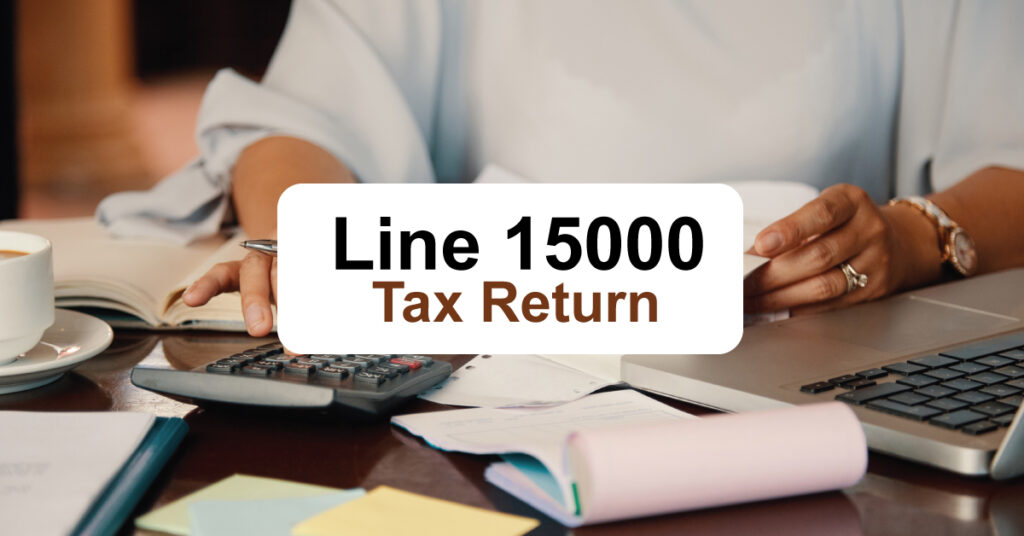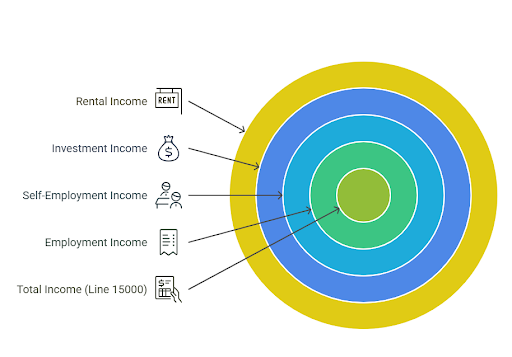What Is Line 15000 On Tax Return? A Comprehensive Guide

In this comprehensive guide, we’ll explore what Line 15000 entails and how One Accounting can help you navigate the complexities of tax reporting.
Components of Line 15000

Line 15000 encompasses various types of income, which are listed below:
Employment Income
Self-Employment Income
Investment Income
Investment income, such as interest, dividends, and capital gains, also contributes to the total income you report on Line 15000. You’ll find this information on T5 and T3 slips issued by financial institutions or the companies in which you’ve invested, detailing your investment earnings.
Rental Income
If you earn income from renting out a property, you report your rental income on Line 15000. Keep in mind that you can deduct eligible expenses related to your rental property to determine your net rental income.
Other Income Sources
Importance of Line 15000
Tax Calculations
Eligibility for Credits and Benefits
Common Mistakes to Avoid
- Omitting income sources: Don’t forget to include small or irregular income streams, such as freelance work or interest income. It’s crucial to report all your earnings, including global income, due to Canada’s agreements to avoid double taxation.
- Incorrect deductions: Make sure to claim only eligible deductions, such as RRSP contributions or legitimate business expenses.
- Miscalculating rental income: Report your gross rental income on Line 15000, not your net income after expenses.
- Not reporting foreign income: If you earn income from sources outside Canada, you must report it on your Canadian tax return.
Accessing Line 15000 Information
You can find your Line 15000 information in various places listed below:
- Personal Tax Return Documents: Locate Line 15000 on your tax return summary page.
- Notice of Assessment: Refer to the CRA-issued document to find your total income details.
- CRA My Account: Access your tax information online through the CRA portal.
- Contacting CRA: Reach out to the CRA directly via phone for assistance.

Implications of Line 15000 on Financial Matters
- Loan and Mortgage Applications: Financial institutions may request your Line 15000 information for income verification when applying for loans or mortgages.
- Legal Proceedings: Authorities may use Line 15000 to determine obligations such as spousal or child support in legal proceedings.
- Government Programs: Governments assess eligibility for various assistance programs based on the total income reported on Line 15000.
At One Accounting, our team of experienced CPAs is dedicated to helping you navigate the complexities of tax reporting, including accurately determining your total income on Line 15000. We offer comprehensive accounting and tax services tailored to your unique needs.
Our experts can assist you in:
- Identifying all your income sources and ensuring accurate reporting on Line 15000
- Claiming eligible deductions and credits to optimize your tax situation
- Providing personalized tax planning strategies to minimize your tax liability
- Ensuring compliance with Canadian tax laws and regulations
Conclusion
Remember, accurately reporting your total income on Line 15000 is not only a legal obligation but also essential for making informed financial decisions and optimizing your tax situation. Trust One Accounting to provide the expertise and support you need to achieve your financial goals.
